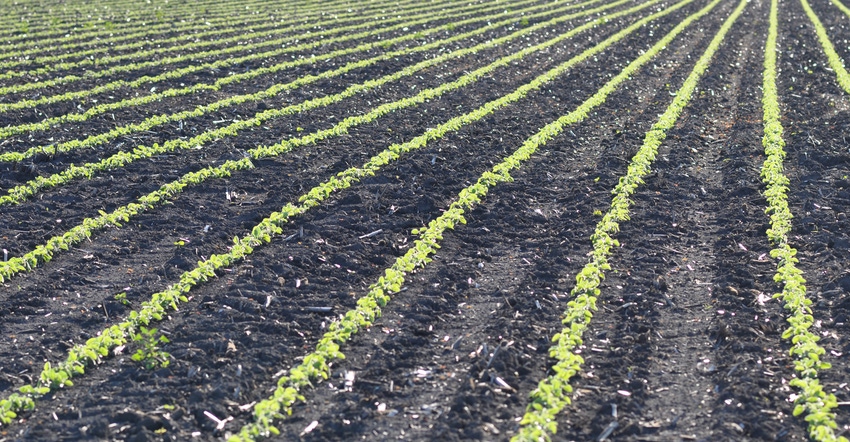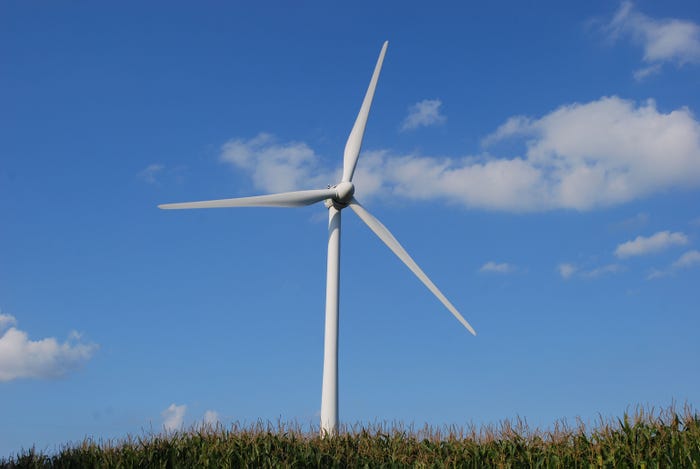February 13, 2018

By Seth Baker
With 27 wind projects producing 4,026 megawatts annually, Illinois wind energy production is the sixth highest in the nation. That’s why wind energy and its effect on Illinois farmland values is so important.
Fifteen years following the state’s first wind project launch, there is significant data showing added value to farmland with turbines. David Klein, managing broker with Soy Capital Ag Services, tracked data from three wind farms in McLean, Woodford and Livingston counties for 10 years.
From 2009 to 2016, there were 22 farmland sales with wind lease income averages of $102 per acre. Klein compared these sales with similar farmland sales without lease payments and found an average $1,162-per-acre increase.
The typical income capitalization (CAP) rate, or the investor’s expected rate of return, is between 2.5% and 3.5% for good-quality central Illinois farmland. The CAP rate for wind lease payments is near 9%. This represents a significant opportunity to increase farmland returns.
While the economic benefit for landowners is evident, there are other potential issues that weigh on the value of the farmland, like operating farm equipment around the turbines, aerial spraying and drainage challenges, and noise or vibration issues. The length of remaining payments, location of the turbine and contract terms influence value, as well.
These issues can make determining the value of wind payments difficult. The additional income can be evaluated from an economic standpoint, but the farmability factors can be harder to value, especially because they vary significantly from farm to farm. It is even more difficult to calculate the emotional factors that can come into play with wind projects.
 WIND ENERGY IN ILLINOIS: Established in 2003, Mendota Hills Wind Farm, Paw Paw, Ill., was the first utility-scale wind project in Illinois. Other projects quickly followed, including the largest wind farm east of the Mississippi River: Twin Groves Wind Farm in McLean County.
WIND ENERGY IN ILLINOIS: Established in 2003, Mendota Hills Wind Farm, Paw Paw, Ill., was the first utility-scale wind project in Illinois. Other projects quickly followed, including the largest wind farm east of the Mississippi River: Twin Groves Wind Farm in McLean County.

Certain areas of Illinois value the additional income differently. In Henry County, where local buyers dominate the land market, wind leases generate little to no additional premium. Farmer-buyers often discount for the concerns noted previously, like farmability, more than investor-buyers.
Determining the value of a new wind lease with limited sales data is challenging. Data from older, more established areas may help determine the factors that matter to buyers and provide insight into possible values, but they may show lower CAP rates as lease renewal and decommissioning issues are raised. Ultimately, the market will determine the value, and each new sale will provide additional insight.
To learn more about farmland values and lease trend topics, attend the Illinois Society of Professional Farm Managers and Rural Appraisers’ Land Values Conference March 22 in Bloomington, Ill., by registering at ispfmra.org.
Baker is owner and president of Field Level Agriculture. He is a member of the Illinois Society of Professional Farm Managers and Rural Appraisers, whose members regularly contribute to this column. Email farm management questions to Carroll Merry at [email protected].
You May Also Like




